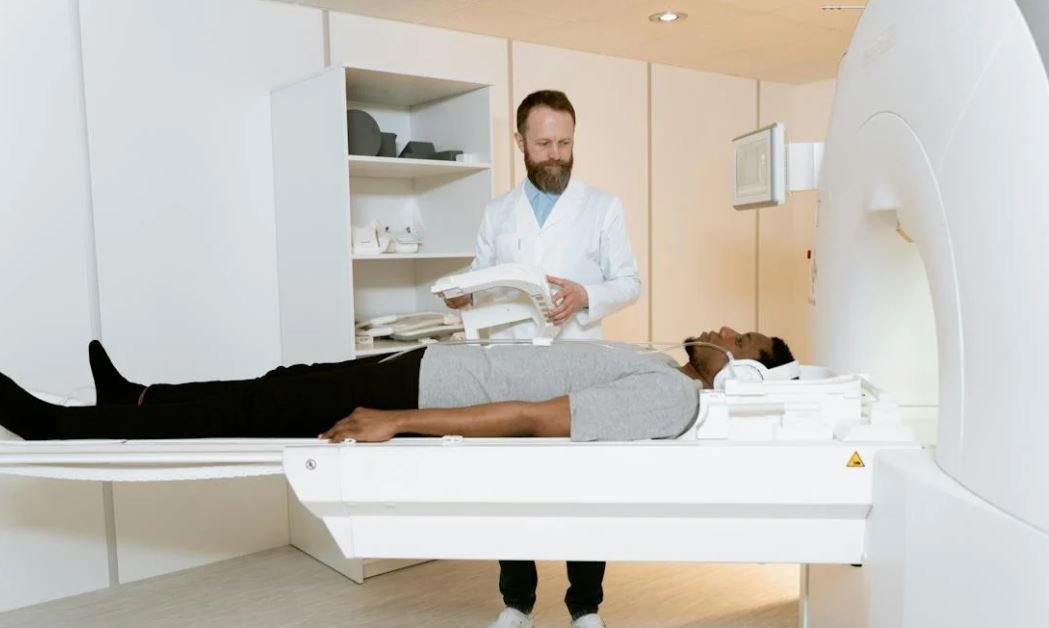Footage Release Form
In the world of film production and photography, obtaining permission to use an individual’s image is crucial. A footage release form is a legal document that grants permission from individuals and property owners to include their image or property in a film or photograph. As a filmmaker or photographer, it is essential to understand the importance of obtaining proper consent to protect yourself and your work.
Key Takeaways:
- A footage release form is a legal document that grants permission to include someone’s image or property in a film or photograph.
- Proper consent helps protect filmmakers and photographers from legal issues and allows them to use the footage without any restrictions.
- Respecting individuals’ privacy and rights is essential when using their image or property in your creative work.
**When shooting videos or capturing photographs that involve individuals or private properties, it is essential to obtain their consent through a footage release form.** This form acts as a legal agreement between the creator and the person or property in question, granting permission to use their image or property. By obtaining proper consent, filmmakers and photographers can protect themselves from potential legal issues and ensure they have the necessary rights to use the footage as intended.
**One interesting fact to note is that a footage release form not only protects the creator, but it also safeguards the rights and privacy of the individuals or properties featured in the work.** It ensures that the people or properties involved are aware of and agree to their inclusion in the creative project, allowing them to maintain control over how their image or property is used.
The Contents of a Footage Release Form
A footage release form typically includes the following information:
- **Personal information** of the individual granting the permission, such as their full name and contact details.
- **Description of footage**: A detailed explanation of the footage or photograph, including the specific scenes or aspects where the individual’s image or property may appear.
| Release Forms | Importance |
|---|---|
| Model Release Form | Grants permission to use an individual’s likeness in images or videos. |
| Property Release Form | Grants permission to use images or videos of privately owned properties. |
| Location Release Form | Grants permission to film or photograph in specific locations. |
**It is important to tailor the content of the footage release form to the specific project requirements**, ensuring that all relevant details are included to protect the creator and secure the necessary permissions.
Obtaining Consent
When seeking consent, it is crucial to clearly explain how and where the footage or photograph will be used. **The language used in the form should be concise and easy to understand**, avoiding any technical jargon that may confuse the individual granting permission. Clearly outlining the project’s purpose and the duration of the release is also essential.
**Interesting fact: Consent can be revoked by the individual at any time, even after signing the form.** This serves as a reminder that respecting an individual’s rights and privacy is of utmost importance throughout the entire creative process.
| Consent Types | Definition |
|---|---|
| Express Consent | Specific and direct permission given by the individual. |
| Implied Consent | Permission inferred from the individual’s actions or conduct. |
Using the Footage
Once the footage release form is signed, **the creator can use the footage according to the permissions granted**. It is important to review the release form periodically to ensure it remains valid and covers all potential uses of the footage. Keeping thorough records of the release forms is also vital for future reference.
**An interesting aspect to consider is the global nature of digital content. With the internet and social media, footage can reach a vast audience worldwide within seconds.** Filmmakers and photographers should keep this in mind when obtaining consent and ensure that the release form covers the various platforms and channels where the footage may be published or shared.
By understanding the importance of obtaining a footage release form and respecting individuals’ privacy and rights, filmmakers and photographers can create their work with confidence, knowing they have the necessary permissions to use the footage as intended. Remember, always obtain consent and document it properly to protect yourself and your creative endeavors!

Common Misconceptions
Misconception: Footage release forms are only necessary for professional videography.
Contrary to popular belief, footage release forms are not limited to professional videography. Here are some misconceptions people have:
- Only professional videographers need to obtain footage release forms.
- Amateur videographers think they can use any footage without consent.
- People assume they don’t need a form if the video is for personal use only.
Misconception: Obtaining a footage release form is a complicated process.
Another common misconception is that obtaining a footage release form is a difficult and complicated process. Here are some common misconceptions:
- People incorrectly believe they need a lawyer to draft a footage release form.
- Some think it is time-consuming to obtain consent from every person in the footage.
- There is a belief that obtaining a form will require significant expenses.
Misconception: Footage release forms are only required for commercial use.
Many individuals mistakenly believe that footage release forms are only necessary when the footage will be used for commercial purposes. Here are some misconceptions:
- Non-profit organizations believe they are exempt from obtaining consent forms for their videos.
- Some people assume that personal vlogs or home videos don’t require consent from those appearing in the footage.
- There is a misconception that using footage without consent is only an issue if it leads to financial gain.
Misconception: Footage release forms are only needed for recognizable individuals.
It is often misunderstood that footage release forms are only necessary for capturing recognizable individuals. Here are some misconceptions:
- People assume consent is not required if the individuals’ faces are blurred or obscured in the footage.
- There is a misconception that obtaining consent is unnecessary when shooting in a public place.
- Some believe that using footage from a public event exempts them from obtaining consent.
Misconception: Once consent is obtained, the footage can be used in any way without limitations.
There is a misconception that once consent is obtained, there are no restrictions on how the footage can be used. Here are some common misconceptions:
- People believe that obtaining consent for one project automatically grants permission for future use.
- There is a misunderstanding that consent allows the use of the footage for any commercial purposes.
- Some assume consent covers both the use and distribution of the footage.

Introduction
This article explores the various aspects of a Footage Release Form, which is a legal document used in the media and entertainment industry to obtain consent from individuals appearing in visual recordings. The release form ensures that the footage can be used for its intended purpose without infringing on the rights of the individuals involved. Below are ten informative tables that provide valuable insights related to the topic.
Table 1: Types of Footage
This table showcases different types of footage that commonly require a release form, along with brief descriptions of each.
| Type | Description |
|---|---|
| Commercial | Footage used to promote a product or service for financial gain. |
| Film | Footage captured for inclusion in a motion picture or documentary. |
| Television | Footage used in TV shows, series, or advertisements. |
| News | Footage depicting real-time events used for reporting purposes. |
Table 2: Key Elements
This table outlines the essential elements typically included in a Footage Release Form to ensure its validity and effectiveness.
| Element | Description |
|---|---|
| Date | The date the release form is signed by the concerned party. |
| Name | Full legal name of the individual granting consent. |
| Address | Physical address of the individual granting consent. |
| Media | Description of the footage and its intended use. |
| Usage Rights | Scope and duration of the rights granted for the footage. |
Table 3: Common Exclusions
In certain situations, a Footage Release Form may not be necessary. This table highlights some common scenarios where consent may not be required.
| Situation | Description |
|---|---|
| Public Events | Filming in public spaces where there is no reasonable expectation of privacy. |
| News Reporting | Using footage as part of a news report or journalistic content. |
| Emergency Situations | Pressing circumstances where immediate consent cannot reasonably be obtained. |
Table 4: Release Form Types
This table presents different types of Footage Release Forms commonly used in the industry.
| Type | Description |
|---|---|
| Standard Release | A generic form used for most filming situations. |
| Minor Release | A specific form used when filming individuals under the age of 18. |
| Location Release | A form used to gain consent for filming on private property or businesses. |
Table 5: Duration of Consent
This table illustrates the typical duration of consent granted by signing a Footage Release Form.
| Duration | Description |
|---|---|
| Unlimited | Consent is granted indefinitely for any future use of the footage. |
| Specific Timeframe | Consent is granted for a specified period, as agreed upon in the release form. |
| Event-Based | Consent is granted only for a particular event or occasion. |
Table 6: Legal Consequences
This table outlines potential legal consequences that may arise from failing to obtain a valid Footage Release Form.
| Consequence | Description |
|---|---|
| Lawsuits | Individuals depicted in the footage may file lawsuits for invasion of privacy or unauthorized use. |
| Fines/Penalties | Regulatory bodies may impose fines or penalties for non-compliance with privacy laws. |
| Reputation Damage | Failure to obtain proper consent can lead to negative publicity and damage to reputations. |
Table 7: International Variations
This table presents examples of international variations in the requirements for a Footage Release Form.
| Country | Variations |
|---|---|
| United States | Strict regulations and strong emphasis on individual rights and privacy. |
| United Kingdom | Clear guidelines on obtaining consent, but certain exceptions for news and artistic use. |
| Australia | Similar to the US and UK, with comprehensive guidelines for obtaining consent. |
Table 8: Notable Court Cases
This table highlights significant court cases related to footage release forms, establishing legal precedents and clarifying consent requirements.
| Case | Outcome |
|---|---|
| Doe vs. Production Company | Production company found liable for using footage without proper consent, resulting in a significant settlement. |
| Smith vs. News Network | Court ruled in favor of the news network, recognizing the exemption for news reporting. |
| Anderson vs. Filmmaker | Legal precedent set, clarifying the need for a release form in documentary filmmaking. |
Table 9: Industry Standards
This table outlines industry standards and best practices concerning the use of Footage Release Forms.
| Standard | Description |
|---|---|
| Clear Language | Forms should be written in plain and understandable language to avoid confusion. |
| Separate Forms | Individuals should sign a separate release form for each distinct footage usage. |
| Retaining Copies | Production companies should retain copies of signed forms as proof of consent. |
Table 10: Release Form Templates
This table provides examples of popular templates and resources available for creating Footage Release Forms.
| Resource | Description |
|---|---|
| Motion Picture Association (MPA) | Offers downloadable templates tailored to various production needs. |
| Media Colleges and Associations | Provides templates specific to the film and media industry. |
| Legal Consultation Services | Law firms specializing in media or entertainment can create customized release forms. |
Conclusion
In summary, a Footage Release Form is a crucial legal document used to obtain consent from individuals appearing in visual recordings. Its purpose is to protect the rights of both the individuals involved and the producers of the footage. By analyzing different elements, consequences, and variations related to release forms, this article aims to raise awareness about their importance and promote ethical practices in the media industry.
Frequently Asked Questions
Footage Release Form
Question 1
What is a footage release form?
Question 2
Why is a footage release form necessary?




